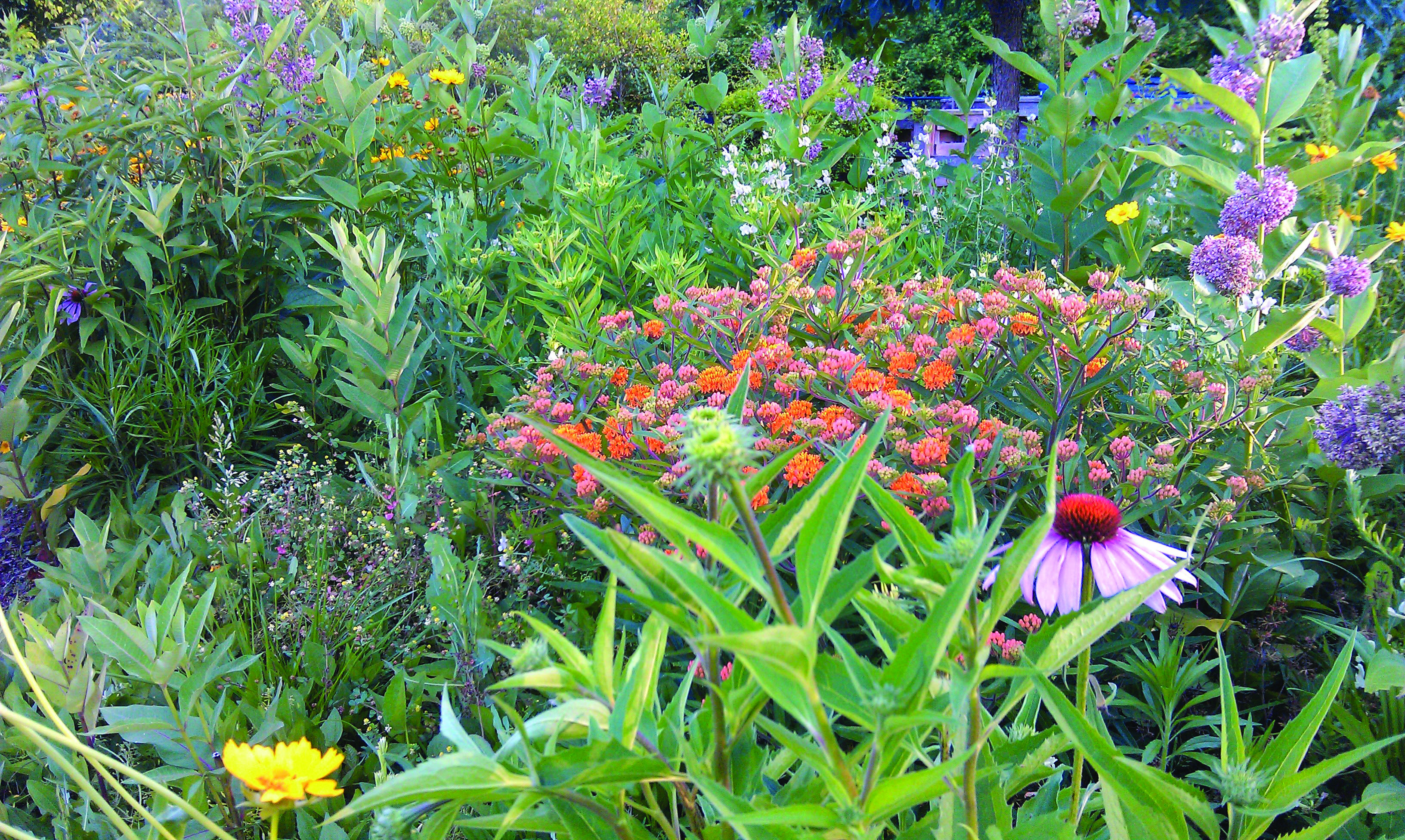“Nothing could be finer than to be in Carolina, in the morning…” begins the 1920s Broadway musical tune, written by Gus Kahn, with music by Walter Davidson. The song’s lyrics mention morning glories winding around doors “whispering pretty stories I long to hear once more…” and butterflies fluttering up and kissing “each little buttercup, at dawning.”
The song describes a few of the natural aspects (plants and wildlife) of what early summer is like in North Carolina. Actual landscapes in the state are quite variable, because of its great diversity of natural habitats and wildlife which are found from the high mountains, through the hilly Piedmont region (including Apex), down to the coastal plain and the sea. It’s a wonderful time to be outdoors and explore nature, in your own backyard and possibly further afield.
As the song says, it’s good to be out when “the dew is pearly early.” Summer flowers open with the warming sun and greet the bees and other pollinators, birds sing their sweet songs while wildlife starts to move about, and the summer trees and other flora provide a lush, green landscape all around. As each day begins, there is much natural beauty to behold. As summer takes hold, it is good to get outside before the heat of the day sets in, especially if you tend a garden, care for patches of flowers or other plants, or have other outdoor tasks to do.
Whatever time of day you go outside, be sure to bring a shade hat and bottled water with you, perhaps along with sunscreen and mosquito repellant. On warmer days, you might want to tie a wet bandana around your neck to keep cool and to protect against too much sun exposure and pesky bugs. Also useful are long-sleeved shirts and loose pants made of breathable materials like cotton and linen. And if you go walking through high brush, you could tuck the hems of your pants under your socks, thus discouraging ticks and other bugs from hitching a ride. It’s useful—promise! And a wee bit “jaunty.” Bog-stomping and forest-foraying fashion at its best.
Central North Carolina is part of what the US Department of Agriculture calls “plant hardiness zone 7b.” A hardiness zone is a geographically defined area in which specific kinds of plant life can grow, based on climatic conditions, including their ability to withstand the zone’s minimum temperatures. Zone 7b – which includes Apex – has minimum temperatures of 5° to 10°F, but colder temperatures may still occur. The average high temperature is 70°F. NC’s mountain region is zone 7a while the Piedmont region is 7b, and the state’s coastal region has both 8a and 8b areas. There are zone 7 areas in 28 states and the United States in total has 13 zones.
Local gardeners in zone 7 (a and b) benefit from long growing seasons with lots of sunshine and ample rainfall (on average over 47 inches of rain per year, according to US Climate Data). A wide variety of flowers, trees, shrubs, and vegetables can be grown. Native species of plants and those adapted to growing in the same hardiness zones will be more likely to thrive here in Apex, and also provide great benefits to us and often to area wildlife.
Native plantings include sun-filled prairies full of drought-resistant plants like coneflowers, black-eyed Susan, milkweeds, bee balm, coreopsis, daylilies, and asters…grassy patches and old fields with sea oats, blackberry, broomsedge, goldenrod, joe-pye-weed, highbush blueberries, and wild indigo…and wetlands filled with elderberry, jewelweed, swamp rose, flag iris, jack-in-the-pulpit, trilliums, and ferns, for example. Natural areas like these, no matter how small, enhance NC’s native environments and support many wild lives with food, shelter, building materials, and other many other resources.
You might want to choose your plants to purchase based on what you want them to do – for example, what wildlife you’d like to attract. To support hummingbirds, pick plants with trumpet-shaped flowers (like bee balm and jewelweed), especially red ones; vines like coral honeysuckle, crossvine, and trumpet creeper; and trees like sourwood (bees love their blooms) and the evergreen Magnolias and American holly. Milkweeds are an essential plant to support Monarchs, and other butterflies (like Swallowtails) adore plants like parsley and fennel.
The North Carolina Native Plant Society has a useful webpage focused on “Recommended Native Species’’ which breaks the plant categories down into large and small trees, shrubs, vines, ferns, grasses and sedges, groundcovers, wildflowers, and there is information on sun versus shade plants, too. https://ncwildflower.org/recommended-native-species/. They also provide a useful PDF-formatted list of NC wildflowers online, which includes notes on bloom time, what region of the state the plants are found in, planting needs, and how wildlife can benefit from each plant: https://ncwildflower.org/handouts/Native_Wildflowers.pdf.
The native plants mentioned above are “perennial,” meaning they typically live for more than two years. The term is used to differentiate a plant from shorter-lived annuals and biennials, which are still nice plants that can help to beautify your outdoor spaces. They just won’t live as long. Annuals are nice, however, to plant in between more long-lasting perennials, maybe to fill in spaces where nothing grew this year, or to add a pop of color or just something new.
Gardening efforts using these sorts of plants provide us with “viewscapes” of great natural beauty and useful local products like healthy foodstuffs, colorful dyes, and herbal medicines. Add a garden patch overflowing with heirloom vegetables, fruits, and herbs, and your life will be filled with much natural largess! There are many wonderful plants to choose from that should do well here in zone 7, at “the peak of good living,” in Apex.
With a (hopefully) green thumbs up (not brown), we wish you good luck and happy days with your planned gardening efforts.








